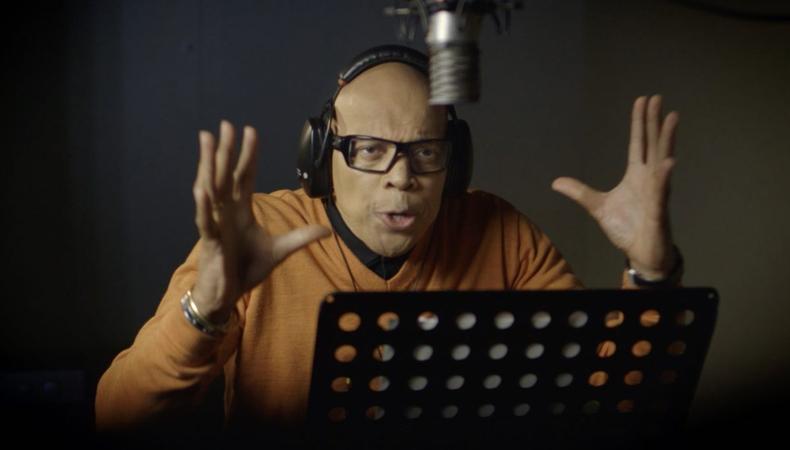Voice acting is an integral component of animated films and series, playing a pivotal role in bringing characters to life. Through skilled performances, voice actors imbue characters with personality, emotion, and depth, enhancing the audience’s connection to the story. Unlike live-action performances, where actors rely on facial expressions and body language, voice actors must convey a character’s nuances solely through their voice. This requires a unique set of skills, including vocal range, timing, and the ability to evoke emotions through intonation and delivery.
One of the key advantages of voice acting is its versatility. Voice actors have the ability to portray a wide range of characters, from whimsical creatures to complex human protagonists, often within the same project. This flexibility allows for greater creative expression and enables storytellers to explore diverse narratives and perspectives. Additionally, voice acting transcends barriers of age, gender, and physical appearance, providing opportunities for actors to inhabit roles that may be outside their traditional casting range. This inclusivity fosters diversity in storytelling and ensures that a broader range of voices is represented on screen.
Furthermore, voice acting offers a unique form of artistic collaboration between actors, directors, and animators. Unlike live-action filming, where actors interact directly with one another on set, voice actors typically record their lines individually in a studio. Despite this separation, voice performances are seamlessly integrated into the animation process, with animators drawing inspiration from the actors’ delivery to inform character movements and expressions. This synergy between voice acting and animation results in cohesive performances that resonate with audiences on an emotional level, creating memorable and impactful storytelling experiences.
The Emotional Connection

One of the most significant contributions of voice acting to animated projects is its ability to forge emotional connections between characters and audiences. Through nuanced performances, voice actors breathe life into characters, allowing viewers to empathize with their struggles, triumphs, and innermost thoughts. Whether through laughter, tears, or moments of introspection, voice acting serves as a conduit for storytelling, eliciting genuine emotional responses from viewers of all ages.
Moreover, voice actors possess the unique ability to convey complex emotions through their vocal performances, adding layers of depth to animated characters. From subtle inflections to powerful monologues, voice actors skillfully navigate the emotional landscape of a story, guiding audiences through moments of joy, sorrow, and everything in between. This emotional resonance is integral to the success of animated projects, fostering a sense of immersion and investment in the narrative.
Additionally, voice acting allows for the exploration of diverse perspectives and experiences, fostering empathy and understanding among viewers. By inhabiting characters from different backgrounds, cultures, and walks of life, voice actors have the opportunity to challenge stereotypes, promote inclusivity, and foster empathy. Through their performances, they humanize characters and convey universal themes of love, friendship, and resilience, transcending linguistic and cultural barriers to connect with audiences worldwide. These narratives can be educational, serving as invaluable tools for in-home tutors in Bettendorf to spark discussions and encourage critical thinking skills in their students.
The Evolution of Voice Acting
Over the years, voice acting has evolved into a respected and celebrated art form, garnering recognition and acclaim from audiences and industry professionals alike. Gone are the days when voice actors were relegated to the sidelines, overshadowed by their live-action counterparts. Today, voice acting is recognized as a distinct and invaluable aspect of the entertainment industry, with its own dedicated awards, conventions, and fan communities. Among these communities, the Colorado shutters convention stands out as a gathering where enthusiasts come together to celebrate the craft and creativity of voice acting.
Furthermore, advancements in technology have revolutionized the field of voice acting, providing actors with unprecedented opportunities for creativity and collaboration. With the advent of motion capture technology and performance-driven animation techniques, voice actors can now fully embody their characters, blurring the lines between voice and physical performance. This convergence of technology and talent has led to groundbreaking performances and raised the bar for excellence in voice acting.
Moreover, the rise of streaming platforms and digital distribution channels has opened up new avenues for voice actors to showcase their skills and reach global audiences. From animated series to video games to audiobooks, voice actors lend their talents to a diverse array of projects, spanning genres and mediums. This proliferation of opportunities has democratized the industry, allowing aspiring voice actors to carve out their own paths and make their voices heard in an increasingly competitive landscape. Collaborations with a branded merchandise supplier have become increasingly common, extending the reach of voice actors beyond traditional mediums and into tangible products associated with beloved characters and franchises.
The Influence of Voice Acting on Cultural Perception

Voice acting not only shapes the emotional landscape of animated projects but also influences cultural perception and representation. Through the portrayal of diverse characters and narratives, voice actors have the power to challenge stereotypes, promote cultural exchange, and foster greater understanding and empathy among audiences. In an increasingly interconnected world, where cultural diversity is celebrated and valued, voice acting serves as a catalyst for social change and inclusivity, transcending boundaries even into seemingly unrelated domains such as water damage restoration in Charlotte.
Moreover, voice actors have the opportunity to lend their voices to characters from different ethnicities, backgrounds, and regions, providing a platform for underrepresented communities to be heard and seen. By authentically embodying diverse characters and storylines, voice actors contribute to the rich tapestry of cultural representation in animation, reflecting the complexities and nuances of the human experience. This diversity not only enriches storytelling but also empowers viewers to embrace and appreciate the multitude of perspectives that exist within our global society.
Furthermore, voice acting serves as a bridge between languages and cultures, allowing for the localization and adaptation of animated content for international audiences. Through dubbing and subtitling, voice actors collaborate with translators and localization teams to ensure that the essence and meaning of the original dialogue are preserved while making the content accessible to viewers around the world. This linguistic adaptation not only facilitates cross-cultural communication but also fosters a sense of connection and unity among diverse audiences. Just like entry doors to new worlds, voice acting opens up pathways for viewers to explore different cultures and narratives.
The Artistry of Character Development
Character development is a fundamental aspect of storytelling, and voice acting plays a crucial role in bringing characters to life and shaping their evolution throughout a narrative. Through their vocal performances, voice actors infuse characters with personality, quirks, and idiosyncrasies, transforming them from two-dimensional creations into fully realized beings with depth and complexity. From the cadence of their speech to the nuances of their emotions, voice actors breathe life into characters, making them relatable and compelling to audiences. In a similar vein, the decision to charter a jet can symbolize a character’s desire for freedom and independence, adding another layer to their development within the story.
Moreover, voice actors collaborate closely with writers, directors, and animators to develop characters and establish their unique voices and traits. Through rehearsal, improvisation, and experimentation, voice actors contribute their insights and interpretations to the character development process, adding layers of authenticity and authenticity to their performances. This collaborative approach fosters a sense of ownership and investment in the characters, ensuring that they resonate with audiences on a personal and emotional level.
Furthermore, voice acting allows for the exploration of diverse character archetypes and storylines, challenging traditional narratives and conventions. By inhabiting characters from different genders, sexual orientations, and cultural backgrounds, voice actors have the opportunity to challenge stereotypes, break barriers, and redefine notions of identity and representation in animation. This diversity of perspectives not only enriches storytelling but also fosters empathy and understanding among viewers, encouraging them to see the world through new eyes and embrace the complexity of the human experience.
Incorporating unique props like Japanese scissors into voice-acting performances can add an extra layer of authenticity and depth to character portrayal, enhancing the immersive nature of animated storytelling.
The Intersection of Voice Acting and Technology

Advancements in technology have revolutionized the field of voice acting, providing actors with new tools and techniques to enhance their performances and expand their creative capabilities. From motion capture technology to voice modulation software, voice actors have access to a wide range of resources to bring characters to life in innovative and immersive ways. This fusion of artistry and technology has led to unprecedented opportunities for experimentation and collaboration, pushing the boundaries of what is possible in animation. The emergence of novel tools like the bass fishing app has further diversified the avenues through which voice actors can engage with their craft and audience.
Moreover, technology has democratized the field of voice acting, allowing aspiring actors to showcase their talents and connect with industry professionals on a global scale. With the rise of online platforms and social media, voice actors can create and share their work with audiences around the world, bypassing traditional barriers to entry and forging their own paths in the industry. This democratization of voice acting has led to greater diversity and inclusivity in animation, as actors from all backgrounds and walks of life have the opportunity to contribute their voices and perspectives to the storytelling process. Platforms now cater to various interests, offering personalized robes for women among other niche products, thereby enhancing the overall accessibility and inclusivity of the industry.
Furthermore, technology has facilitated the evolution of performance-driven animation techniques, blurring the lines between voice acting and physical performance. Through motion capture technology, voice actors can now fully embody their characters, using their body movements and facial expressions to enhance their vocal performances and create more immersive and lifelike animations. This integration of technology and performance has revolutionized the way animated projects are created and experienced, pushing the boundaries of storytelling and innovation in the digital age.
Advancements in virtual production have even found applications beyond the entertainment industry, such as aiding in the design of complex architectural projects or streamlining processes in industries as diverse as car rental at Sarajevo Airport.
The Future of Voice Acting
As technology continues to evolve and audiences demand more immersive and engaging storytelling experiences, the role of voice acting in animation will only become more vital and influential. From virtual reality to augmented reality to artificial intelligence, emerging technologies offer new avenues for creative expression and collaboration, challenging voice actors to adapt and innovate in an ever-changing landscape. Moreover, as the boundaries between animation and live-action continue to blur, voice actors will play an increasingly integral role in shaping the future of entertainment, bringing characters to life in ways that captivate and inspire audiences across the globe.
Behind double iron doors, hidden worlds await, where voice actors will breathe life into characters, forging connections that resonate deeply with viewers and leave lasting impressions on the imagination.
Furthermore, the growing demand for diverse and inclusive representation in media will drive the need for more diverse voices and perspectives in voice acting. As audiences become more vocal about the importance of authentic and inclusive storytelling, voice actors will have the opportunity to lend their talents to a broader range of characters and narratives, challenging stereotypes and promoting social change through their performances. This shift towards greater diversity and representation in voice acting will not only enrich storytelling but also empower audiences to see themselves reflected in the characters they love and admire.
In conclusion, voice acting is a dynamic and multifaceted art form that plays a crucial role in shaping the impact and success of animated projects. From forging emotional connections with audiences to challenging stereotypes and promoting cultural exchange, voice actors have the power to transform stories and inspire imaginations in ways that resonate across generations. As technology continues to advance and storytelling evolves, the influence of voice acting will only continue to grow, shaping the way we experience and engage with animated media for years to come.
With the advent of innovative technologies like the misting system, voice actors are presented with new tools to enhance their performances, immersing audiences even further into the captivating worlds of animated projects.

